Protected Intersections for Valencia
4:18 PM PST on February 25, 2020
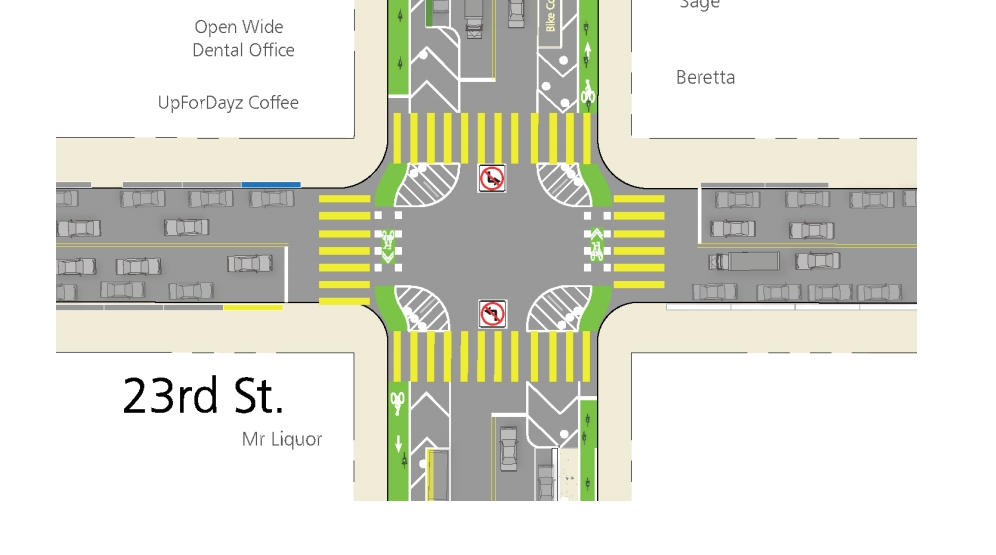
Plans presented three years ago but never installed. Image: SFMTA
Note: GJEL Accident Attorneys regularly sponsors coverage on Streetsblog San Francisco and Streetsblog California. Unless noted in the story, GJEL Accident Attorneys is not consulted for the content or editorial direction of the sponsored content.
The city plans to install protected bike lanes on Valencia, with protected intersections, from 19th to Cesar Chavez, in the spring and summer of this year. "I love that it's protected," said advocate Magnus Barber, one of 400 people who attended an open house last night at City College's San Francisco Mission Campus, to learn about and comment on the plans. "Protected intersections make it difficult for cars to drive into the bike lanes."
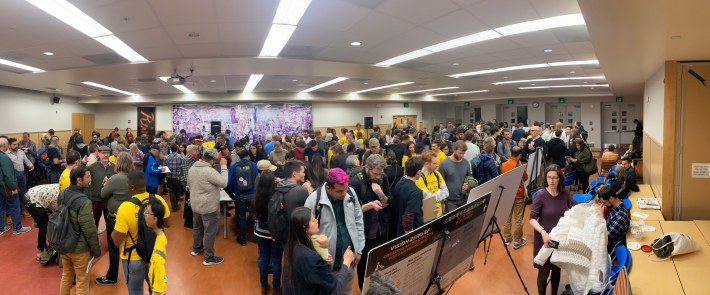
They make it difficult for motorists to drive down bike lanes, and, if properly designed, they also force them to slow down as they turn.
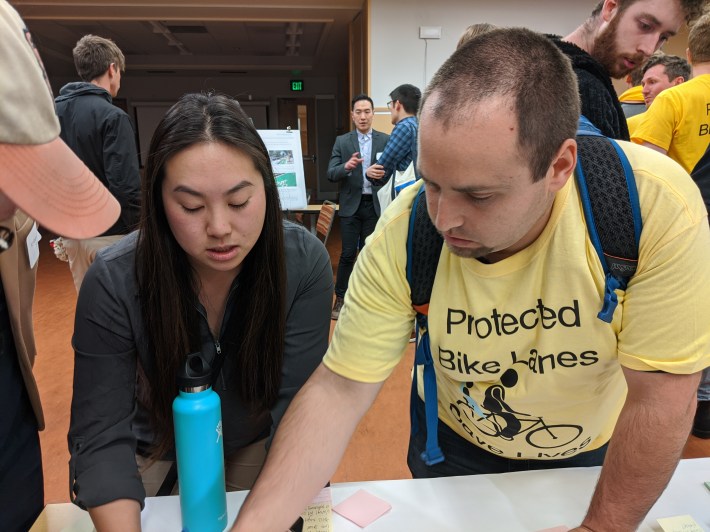
Additionally, they improve sightlines between motorists and cyclists, reducing the potential for conflict.
Valencia Street, as Streetsblog readers are aware, has been ground zero in the fight for safer bike infrastructure. Despite its status as a popular bike corridor, its existing bike lanes are continually blocked by double-parked motorists, most notably Uber and Lyft drivers. In response to this and nearly 300 collisions between 2012 and 2016, SFMTA installed protected bike lanes on one block from Ceasar Chevez to Duncan in 2017 as part of a pilot. It then installed protected bike lanes from Market Street to 15th a little over a year ago. However, much to the dismay of advocates and despite the experience of Dutch traffic engineers, the SFMTA designs continued to use so-called "mixing zones" at intersections, where cyclists going straight are intended to zipper with right-turning motorists.
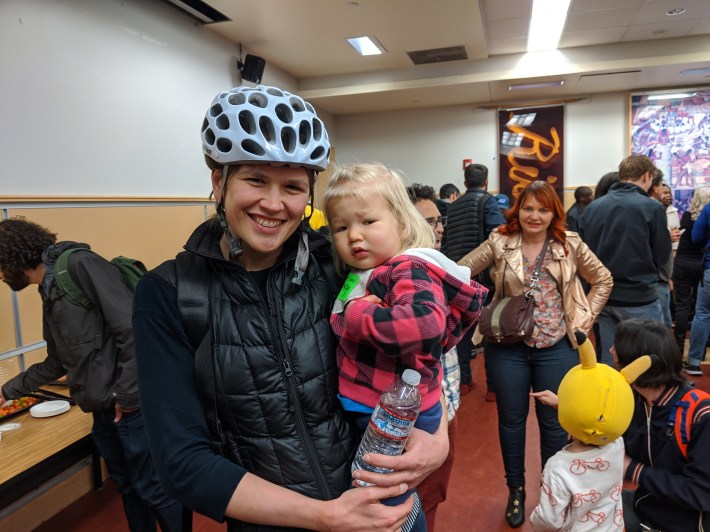
"Mixing zones did not get the greatest reviews," said SFMTA's Kimberly Leung. The new designs, she explained, are at least partially inspired by the inexpensive, quick-build treatments in San Jose, which use a dual-radius turn. The first, outer radius is done with paint and bumps to audibly warn motorists if they're turning too quickly. The inner radius is created with plastic posts, which at least give the impression that if they don't adjust their turn they'll damage their cars (the idea is to eventually replace plastic posts with concrete curbs). Some at the meeting, after reviewing the schematics, thought the SFMTA designs still invite motorists to take turns at unsafe speeds. "The bollards are too far in--it doesn't force drivers to slow," said Kristof Didrickson, another supporter of safe infrastructure at the meeting.
Advocate Bruce Halperin and others pointed out that the one intersection that won't get protection in the designs is also the busiest, with the fastest traffic, and the one that needs it most: Valencia and Cesar Chavez. But Winnie Lee, an engineer with SFMTA, said recently built transit bus bulbs would have to be jack-hammered out to redo that intersection, which would end up costing over $1 million. She added that's something they want to do in a future stage of the project. For now, they will add more paint and posts and continue to use mixing zones, as seen in the diagram below:
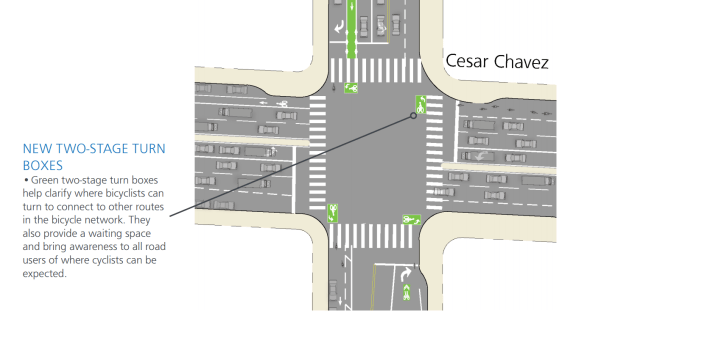
Also saved for a future project: the missing middle, 15th to 19th Street. Engineers are still working on designs for this stretch, which has wider sidewalks, overhead Muni wires, and tighter dimensions. Adding protected bike lanes on this part would require removing parking.
That will be a big political lift. But perhaps it's also an opportunity to try something more radical.
At last month's opening of a 'car-free' Market Street, SFMTA Chair Malcolm Heinicke suggested that Valencia could also be a car-free space. Maybe this four-block stretch is the right place to give that a try. Or rather than car-free, maybe an "access only" arrangement makes sense here, where pedestrians and cyclists are given priority, but motor-vehicles can still access storefronts and driveways from intersecting streets, but then are diverted back off at the next block.
This arrangement maintains delivery access and drop-offs, and leaves plenty of room for biking and walking. Think of it as a permanent, four-block, modified 'Sunday Streets.'
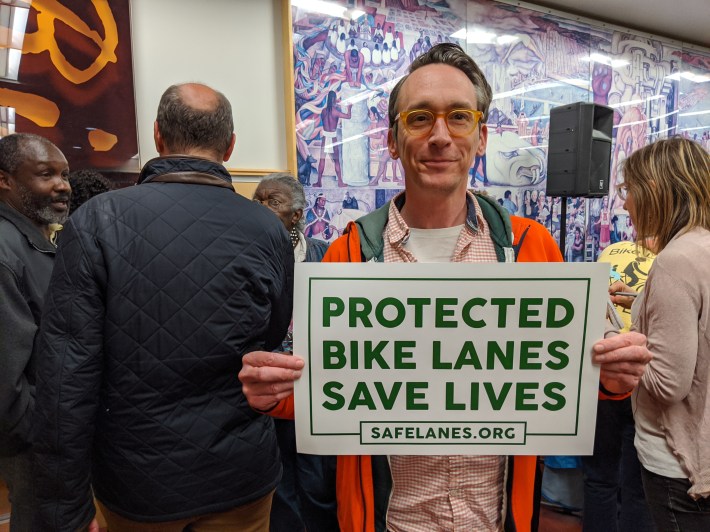
Meanwhile, parishioners from St. Mark Institutional Baptist Church, a little over 200 feet from the intersection with 19th, were concerned that protected bike lanes complicate things for elderly people trying to get to church. "What about people who have a right to worship?" said Naj Daniels, seen below on the left with Bertha Butler, who drives or takes the bus to services from her home in the Fillmore.
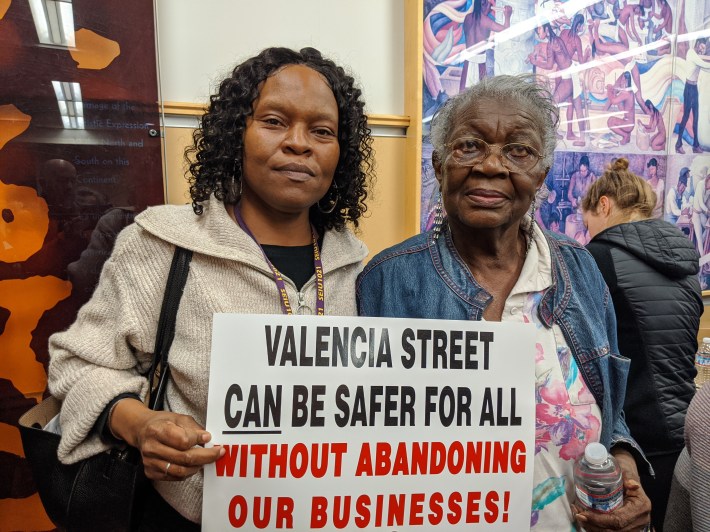
Daniels wants improved loading areas and some kind of SFMTA bus shuttle to help seniors get to church. SFMTA officials seemed open to the idea of using designs similar to what was built at the Friends School and Millennium School to provide a more robust loading zone for the church (see image below). That sounds great, in Streetsblog's view, but this time SFMTA should apply guidelines from Walk SF's "Getting to the Curb" and make sure the connection between the loading island and the curb is level with the sidewalk.
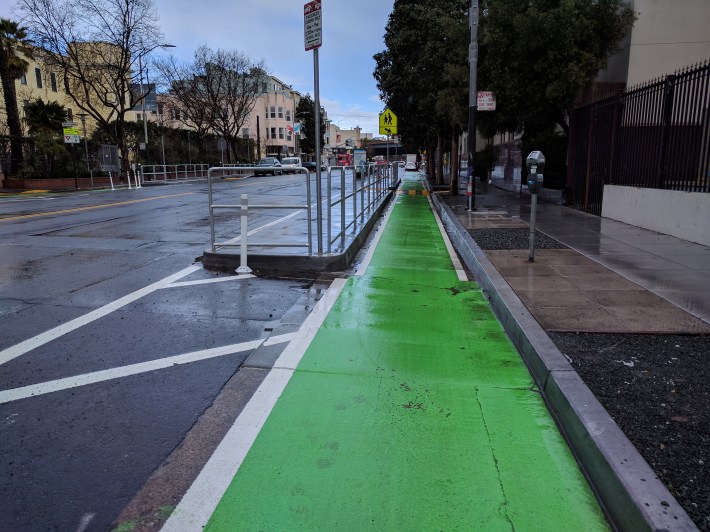
For a full look at the designs, check out SFMTA's PDF.
Stay in touch
Sign up for our free newsletter
More from Streetsblog San Francisco
Weekend Roundup: Bancroft Lane Gets Concrete, Party in Downtown S.F.
...and the Bay Bridge to get its lights back
Richmond-San Rafael Bridge Bike Lane Will Need Support
There's no evidence the bike lane contributes to congestion on the bridge
Update on Oakland DOT’s Lakeshore Protected Bike Lane Project
Public seems fairly positive and accepting towards the coming project. Let's hope it stays that way




